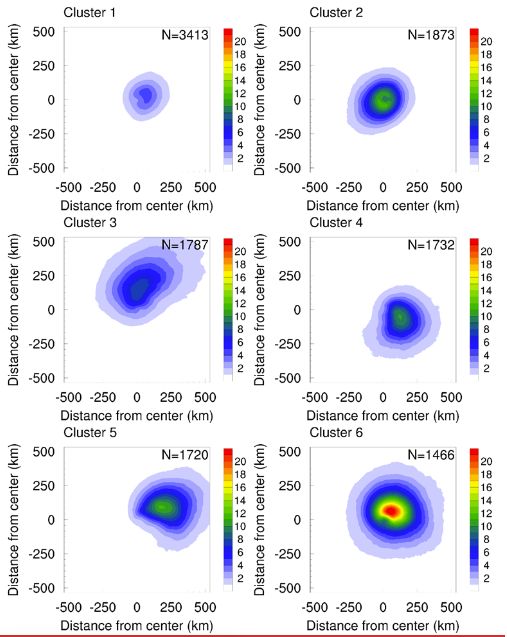
MATYAS – Classification of Tropical Cyclone Rain Patterns Using Convolutional Autoencoder
Dasol Kim and Corene Matyas
Article first published online: 8 January 2024
DOI: https://doi.org/10.1038/s41598-023-50994-5
ABSTRACT: Heavy rainfall produced by tropical cyclones (TCs) frequently causes wide-spread damage. TCs have different patterns of rain depending on their development stage, geographical location, and surrounding environmental conditions. However, an objective system for classifying TC rain patterns has not yet been established. This study objectively classifies rain patterns of North Atlantic TCs using a Convolutional Autoencoder (CAE). The CAE is trained with 11,991 images of TC rain rates obtained from satellite precipitation estimates during 2000−2020. The CAE consists of an encoder which compresses the original TC rain image into low-dimensional features and a decoder which reconstructs an image from the compressed features. Then, TC rain images are classified by applying a k-means method to the compressed features from the CAE. We identified six TC rain patterns over the North Atlantic and confirmed that they exhibited unique characteristics in their spatial patterns (e.g., area, asymmetry, dispersion) and geographical locations. Furthermore, the characteristics of rain patterns in each cluster were closely related to storm intensity and surrounding environmental conditions of moisture supply, vertical wind shear, and land interaction. This classification of TC rain patterns and further investigations into their evolution and spatial variability can improve forecasts and help mitigate damage from these systems.
Read the full publication in Scientific Reports.